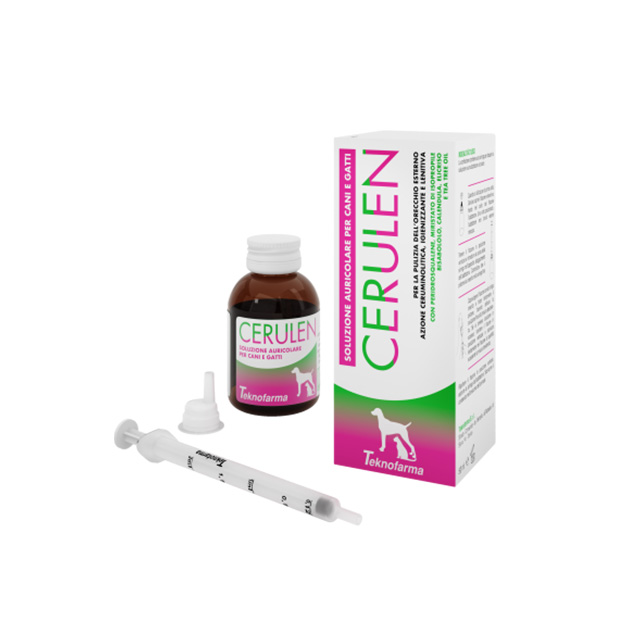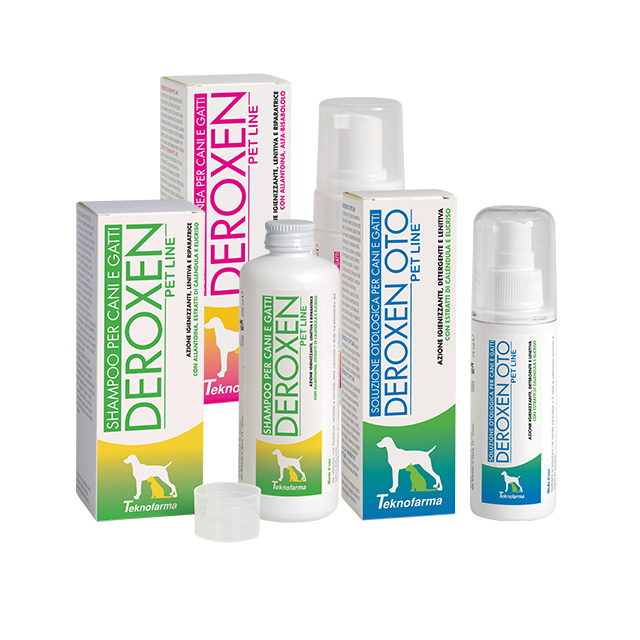Hygiene and well-being
Products for the hygiene and well-being of animals: choosing wisely
PRODUCTS
Today, the pet market offers a very wide selection of pet products. You just need to walk into a pet shop or grooming facility to see the multitude of items of various kinds that are on the shelves. Even pharmacies and drugstores often offer a wide range of pet products to choose from.
With such a wide variety: what to choose?
Not all products are the same, and not all are suitable for all species and breeds. The best thing to do is to read up on the physiological and ethological characteristics of your pet before purchasing a product and seek advice, whenever possible, from your trusted Veterinary Doctor or from a trained and knowledgeable groomer or shopkeeper.
What is meant by hygiene?
The word hygiene comes from the Greek Igea, a Hellenic mythological figure symbolizing physical and spiritual health.
Today, the term refers to the branch of medicine which aims to safeguard health and improve somatic and mental conditions by studying and offering measures to protect the health of individuals and the community.
In other words, hygiene does not only refer to keeping the body and the environment clean. It is also about the preservation of health and prevention of disease.
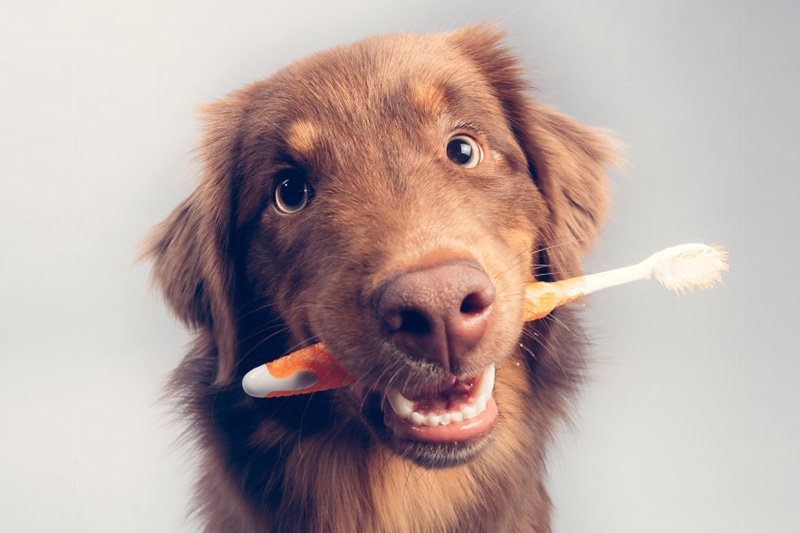
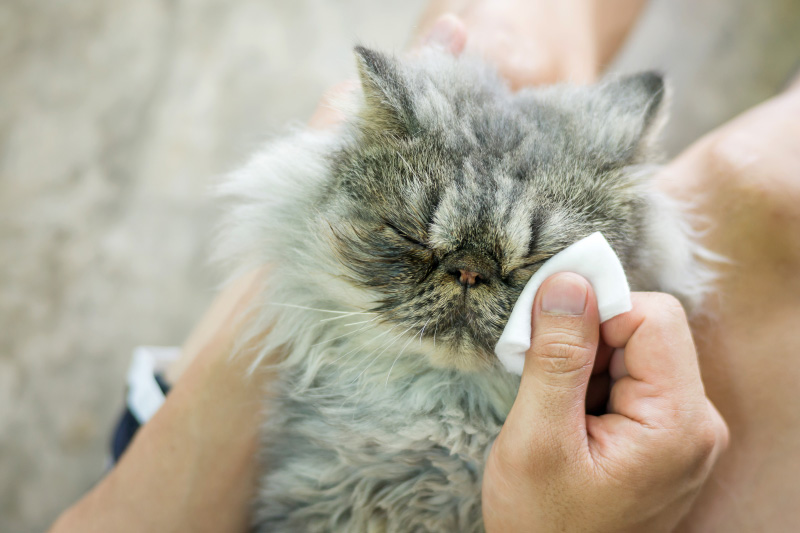
What is meant by animal well-being?
Animal well-being can be a difficult concept to explain because there is no single definition and it can take on different meanings for different people.
Animal well-being has to do not only with physical health, but also with the psychological state of an animal and its ability to express its natural behaviors. The well-being of animals is good if they are healthy and fit, feel good, and are free from suffering.
Animal well-being depends on the respect of the so-called Five Freedoms:
-
Freedom from hunger and thirst
-
Freedom from discomfort
-
Freedom from pain, injury or disease
-
Freedom to express normal behavior
-
Freedom from fear and distress.
Animal hygiene and well-being = better quality of life
Hygiene and animal well-being are not synonymous, yet they are complementary to each other and essential to ensure an optimal quality of life for the animal. Every animal of any species and breed has specific physiological and ethological needs, which must be acknowledged and respected, otherwise its physical and mental health would suffer.
Animal hygiene and well-being: the role of humans
Wild animals seek the best living conditions for their survival by themselves. This is not the case for animals living with humans. It this case, it is humans who must provide them with food, resources, medical care and make their living environment suitable and comfortable. All of this is done not only for the animals’ survival, but first and foremost to provide them with the best possible living conditions.
So, the main actors in the important task of respecting animal well-being are humans.
Products for the hygiene and well-being of animals: choosing wisely makes a difference!
Compared to the past, animal well-being has now become a very important and heartfelt issue in the management of both companion and farm animals.
Veterinary doctors, behaviorists, ethologists, dog educators, groomers, and all those involved with animals are increasingly taking this issue to heart. In addition, the market of petfood, pet products and items has expanded to take animal well-being into account. Countless products that can be defined “animal hygiene and well-being products” are now available.
Coat cleaning and hygiene products
This category includes all the products intended for the cleaning and hygiene of an animal’s fur and coat. They are available as:
-
shampoos
-
foams
-
sprays
-
wet wipes
-
gels
-
solutions.
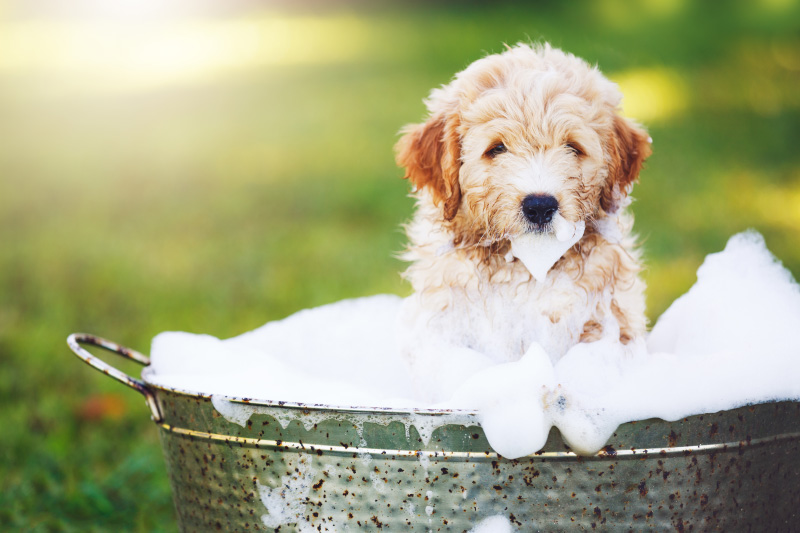
They may be suitable for multiple animal species or for one in particular. Some are specifically designed for a particular breed.
They may contain one or more substances:
-
sanitizers (e.g. chlorhexidine)
-
soothing, moisturizing and healing products (e.g., bisabolol, lanolin, plant extracts such as calendula and helichrysum, etc.)
-
natural insect and pest repellents (e.g., neem oil, essential oils such as geranium, tea tree, citronella, etc.)
-
sunscreens
-
keratolytic and sebum-balancing products (e.g., allantoin, salicylic acid, etc.)
-
products with natural relaxing effects (e.g. valerian essential oil, vetiver, etc.).
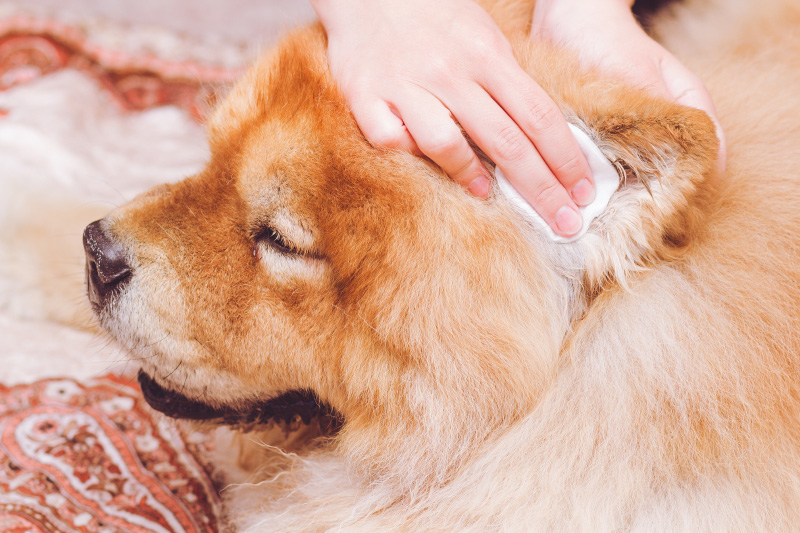
Ear cleaning products
All products for ear cleaning, earwax removal, and adjuvant products for topical therapy in case of pathologies belong to this category.
They are available as:
-
drops, solutions
-
sprays
-
gels
-
wet wipes.
They may contain one or more substances:
-
cerumenolytics (e.g., perhydrosqualene, dioctyl sulfosuccinate sodium salt, etc.)
-
sanitizers (e.g. chlorhexidine)
-
soothing, moisturizing and healing products (e.g., bisabolol, plant extracts such as calendula and helichrysum, ceramides, etc.)
-
keratolytics (e.g., salicylic acid)
-
natural insect and pest repellents (e.g., essential oils such as tea tree, lavender, etc.).
Eye cleaning and hygiene products
Both ophthalmic drops (for intraocular use) and products for the cleaning and hygiene of the eyelids and periocular area belong to this category.
Products for cleaning and protecting the paw pads of dogs and cats
In this category we find all the products designed for the hygiene and protection of the paw pads (and the nose) of dogs and cats.
They come in the form of creams, ointments or gels and may contain substances with sanitizing, moisturizing and elasticizing actions.
Dental cleaning product
This group includes all types of products designed for oral hygiene and cleanliness and to prevent bad breath.
Toothpastes, gels, spray mouthwashes and wet wipes are available on the market.
These products may contain substances with sanitizing, soothing, re-epithelializing properties, which prevent the development of dental plaque.
Products to fight stress and promote relaxation
As we mentioned before, one of the Five Freedoms that ensure animal welfare is the Freedom from fear and distress.
Unfortunately, many animals living in contact with humans or in captivity, even if they live in optimal environmental conditions, can develop stress. This can be a consequence of an organic or psychic disorder, due to the inability to fully meet all the physiological and ethological needs of their species.
Today, fortunately, much attention is given to this aspect. Many pet products on the market are intended to reduce pet stress: complementary feeds containing ingredients that promote relaxation, spray solutions and diffusers that release substances with a calming effect, and pet items designed to stimulate the intellect or encourage play and ward off boredom.
As for products that release substances with a relaxing effect in the air, they are available as:
-
spray solutions
-
diffusers
-
collars
-
wet wipes
-
patches to be applied to the animal's skin.
These may contain essential oils with relaxing properties (e.g., valerian, vetiver, lavender, lemon balm, Roman chamomile) or pheromones, that is copies of the pheromones naturally produced by animals to overcome stress.
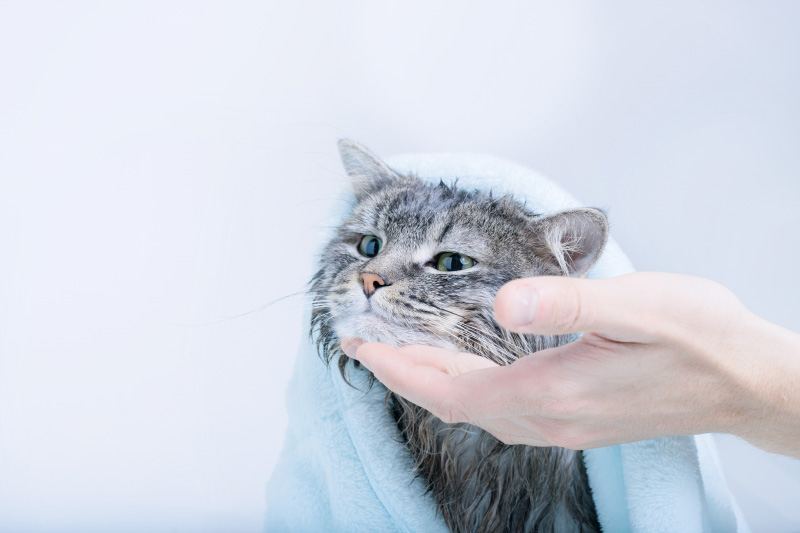
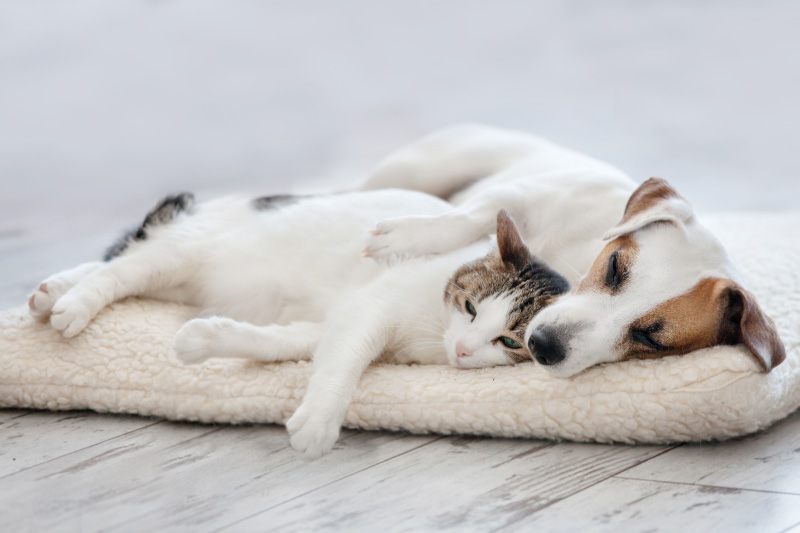
Hygiene, cleaning and environmental sanitation products
When we talk about animal well-being, the environment where animals live must also be taken into account.
In addition to being suitable in terms of space, temperature, humidity and resources, the environment must be clean and healthy. That is why there are so many products on the market that ensure the cleanliness and hygiene of the environments in which animals live, made with harmless substances.
These products are available as sprays, solutions, wet wipes, granules, and may contain detergents, sanitizers, deodorizers, pest repellents, and deterrents to keep animals away.
In summary, the pet market provides a wide range of products and items for the hygiene and well-being of animals.
The choice should never be random, as products can be very different from each other.
To avoid mistakes, it is advisable to look for information first and seek advice, depending on the circumstances, from your trusted Veterinary Doctor or from an experienced and knowledgeable groomer or shopkeeper.
